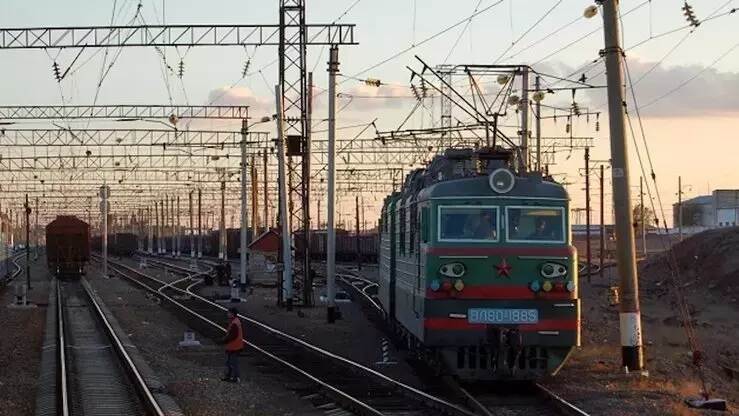Central Asian states easing trade barriers. Agreements mark baby steps toward formation of a free-trade zone
Central Asian states are knocking down trade barriers, addressing a prerequisite for the formation of a unified regional market. The creation of a unified Central Asian market enabling the seamless movement of goods and services is a central aim of a regional economic blueprint supported by the United States, known as the B5+1 process.

B5+1’s potential
That plan, launched in March, calls for the five Central Asian states – Kazakhstan, Kyrgyzstan, Tajikistan, Turkmenistan and Uzbekistan – to take the lead in fostering regional free trade and the diversification of export routes.
Given the flurry of diplomatic activity in mid-April, Central Asian leaders seem intent on exploring the B5+1’s potential. The rationale underpinning the B5+1 holds that a Central Asia with simplified customs procedures, along with effective mechanisms to protect property rights and resolve commercial disputes, will be able to attract more Western trade and investment. That, in turn, will make the Middle Corridor trade route the most lucrative option for regional governments and business.
On April 18, a meeting between Uzbek President Shavkat Mirziyoyev and his Tajik counterpart, Emomali Rahmon, yielded 28 interstate agreements covering a variety of political, economic and social areas. Two agreements aim to specifically facilitate Uzbek-Tajik trade, one to streamline customs procedures at road, rail and air border checkpoints, and another covering “industrial property” rights.
Trade agreements between Uzbekistan and Tajikistan
Prior to Mirziyoyev’s visit, roughly 600 officials and business executives from both states attended an investment forum in Dushanbe, the Tajik capital. According to the Uzbek Trade Ministry, participants were most interested in developing joint projects in the mining and green energy sectors. They also focused on expanding trade.
The Tajik news service, Asia-Plus, reported that the two countries are working together to create a free trade zone at the Oybek-Fotekhobod border crossing, as well as construct a logistics hub at Andarkhan, in the Ferghana Valley. In addition, Tajikistan’s official Khovar news agency reported the two countries were preparing to eliminate the need for filling out time-consuming permit forms at Tajik-Uzbek border points for freight-carrying trucks transiting through the two countries.
According to official Tajik numbers, bilateral trade turnover totaled $505 million in 2023. But officials aim to increase annual turnover to $2 billion “in the coming years,” according to one Uzbek media report (in Russian).
The same figure – $2 billion – was the bilateral turnover target mentioned by Kazakhstan’s president, Kassym-Jomart Tokayev, after he signed a series of bilateral agreements with Kyrgyz President Sadyr Japarov on April 19. Two of those agreements concerned measures to ease cross-border movement. At a news conference (in Russian) following the signing ceremony, Tokayev said a major bilateral goal is boosting the exchange of manufactured goods.
“We have come to a common conclusion that there should be no unresolved issues between our countries. Particular attention was paid to strengthening trade and economic ties,” Tokayev said. He added that “specific measures” are being implemented to facilitate trade, including the digitalization of customs operations at numerous Kazakh-Kyrgyz border crossings. The upgrades are expected to be completed by 2028.
Following up on his talks with Japarov, Tokayev held phone discussions with Uzbekistan’s Mirziyoyev on April 23. Though details were scant on the substance of those talks, regional trade was likely a topic. “The dynamic development of bilateral relations and cooperation at the regional level was emphasized,” Tokayev’s presidential press service noted. Read more about the phone-discussions on Akorda.kz (in Russian).
Trade statistics reported on UZ Daily (in Russian) indicate that interstate truck-borne freight traffic increased in Central Asia in early 2024. But not all the news is good for free-trade boosters.
According to news outlet Eurasianet, perhaps Central Asia’s most fractious bilateral relationship at the moment is Tajikistan-Kyrgyzstan; trade turnover between those two states amounted to just $2.2 million during the first quarter of 2024, one-fifth the level during the same period last year. Border disputes have sparked armed clashes in recent years, and roughly 10 percent of the Tajik-Kyrgyz border still hasn’t been delimited.
These bilateral agreements make it easier for regional states to find common ground. The communique issued at the end of the B5+1 conference in Almaty noted that “trade and transit costs are 60 percent higher in land-locked Central Asia than in countries with connection to the sea,” going on to note that “participants agreed that [trade] costs can be reduced by addressing non-geographical barriers that impede the flow of goods and people across borders.” The agreements signed in mid-April show that Central Asian leaders are addressing this key point.
Source: Eurasianet.